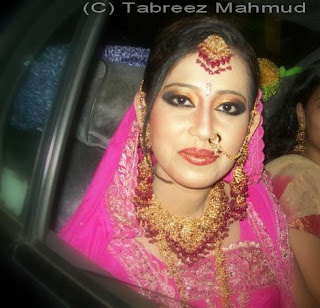A Guide to Touching
Up Your Digital Photos
One problem I faced when starting out with digital photography was how to touch up my raw digital images.
Perhaps an image was slightly dark, perhaps it had to be rotated or cropped. Maybe some dirty spots had to be cleaned out and erased.
Digital photos usually require some form of manipulation before final output. So here's a short guide which I've compiled to help you touch up your photos.
Step 1: Start Up Your Image Editor
The first step, of course, is to fire up your favorite image editing program. For beginners, it's best to get a program like Ulead PhotoImpact. It's a great tool that allows you to achieve professional photo effects using simple, easy-to-follow steps.
Ok - with your image editor ready, open the picture you want to edit within the program and save a backup copy.
Step 2: Remove Red-Eye
If you're taking photos of people, chances are you may have taken a photo with red-eye problems. This is easily removed with image editing software. In Paint Shop Pro, select the Red-Eye Removal tool in the menu and voila, the program does all the work for you. In Ulead PhotoImpact, there's an equivalent tool called Remove Red Eye in the Tool Panel.
Step 3: Rotate and Crop
If you've taken a photo in a wrong orientation, it's easily corrected with little loss in quality by using a rotate tool. You'll also want to do some cropping of your photo to remove cluttered surroundings that draw attention away from your subject. For example, I find cropping very useful if my subject is occupying only the middle portion of the photograph. Cut away the two sides of the picture and you have a much more professional look.
Step 4: Play with Color
Don't be afraid to experiment with colors. Image editing programs put a lot of power in your hands. You can make the leaves purple, change the entire photo to black and white, add a sepia effect - almost anything you want. A good photo editing program will have automatic color balance options to adjust color defects in your pictures.
Step 5: Blurring Effects

Blurring Effects at the side of the photo
Sometimes I like to add a blurring effect to my photos. What you can do here is to select areas of the photo which are unimportant and blur them out. This will bring more attention to the main subject of your photo. For example, if I had a picture of a flower and I wanted to play down the details in the leaves in background, I might add a blurring effect to the background.
Step 6: Sharpen Up
Sharpening the image is the next step in the photo touch up process. Contrary to popular belief, you can't actually sharpen an out of focus image. What I typically do when sharpening an image is to selectively sharpen. That is, I select a part of the image, maybe a person's eyes and sharpen only that area. Leave unimportant areas unsharpened.
Step 7: Resize
Depending on your needs, you may want to resize your photo. If you're emailing a picture to a friend, you'll want to resize the picture down to a much smaller size. If you're printing the photo on a greeting card, you can scale down the image to the size of a 4x6 print.
Step 8: Save Your Work
Ok, you're pretty much done. Remember to save your work in the appropriate image format. Use the large TIFF image format if you want to retain all details for subsequent image editing. On the other hand, you can use the JPEG image format if you want to just send the picture via email or upload them to your website.
Conclusion
Alrighty then! Now you know the secret to touching up and preparing your raw digital photos for output. I'd say that not all the above steps are truly necessary in a given situation. Remember to use your discretion to see which is necessary. Don't be afraid to experiment and learn - practice makes perfect when it comes to touching up your photos. |

0 comments:
Post a Comment